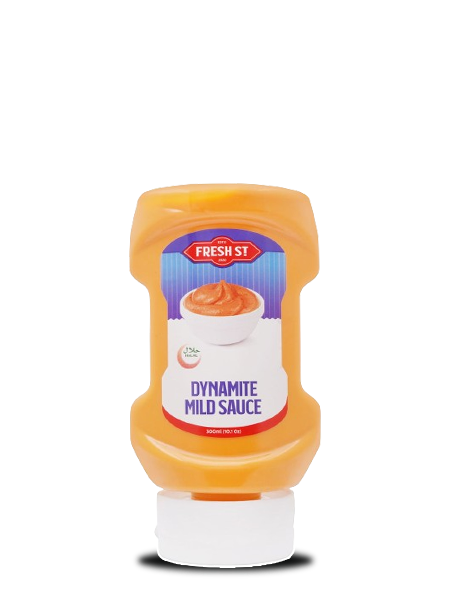While dynamite sauce offers robust flavor

Introduction
Dynamite sauce is a flavorful and spicy condiment that has gained popularity in various cuisines around the world, including Pakistani cuisine. Known for its creamy texture and fiery kick, dynamite sauce is often used as a dipping sauce, marinade, or topping to add bold flavors to dishes.
Exploring the nuances of dynamite sauce—from its ingredients and preparation to its culinary uses—provides insights into its appeal and versatility in modern culinary practices. The base ingredients, such as mayonnaise, can contribute to its creamy texture but also add calories and fat content. Depending on the recipe, additional sugars or sodium from sauces may also be present, impacting nutritional values.
The Flavor of Dynamite Sauce
Dynamite sauce typically combines creamy mayonnaise with spicy and umami-rich ingredients to create a complex flavor profile. Common ingredients include sriracha sauce or chili garlic sauce for heat, Japanese mayonnaise for creaminess, and often a touch of sweetness from honey or sugar.
Additional flavors may be added, such as garlic powder, paprika, or soy sauce, depending on the desired taste profile. The ingredients are mixed together to achieve a smooth and well-balanced sauce that offers a fiery yet savory taste experience.
Culinary Uses of Dynamite Sauce
Dynamite sauce is incredibly versatile and can be used in various ways across different cuisines. In Pakistani cuisine, it is commonly served as a dipping sauce for appetizers like spring rolls, tempura, or fried seafood, adding a spicy and creamy element to complement the crispy textures. It also serves as a popular topping for sushi rolls, where its bold flavors enhance the taste of raw fish and rice.
Moreover, dynamite sauce can be used as a marinade for grilled meats or seafood, infusing them with its spicy and creamy goodness. Its versatility extends to being a flavorful dressing for salads or a dipping sauce for fries and other snacks, showcasing its adaptability in diverse culinary applications.
Varieties and Regional of Dynamite Sauce
Dynamite sauce exhibits regional adaptations and variations across different culinary traditions. In some recipes, mayonnaise may be substituted with Greek yogurt or sour cream for a tangier twist. Variations in spiciness levels may also occur, with some recipes incorporating additional chili peppers or hot sauces to intensify the heat.
The inclusion of complementary flavors such as lime juice, cilantro, or sesame oil further enhances the sauce’s complexity and appeal. These regional adaptations highlight dynamite sauce’s flexibility as a condiment that can be customized to suit different tastes and preferences.
Health Considerations and Ingredients
While dynamite sauce offers robust flavor, it is important to consider for its ingredients and potential health implications. The base ingredients, such as quality mayonnaise, can contribute to its creamy texture but also add calories and fat content. Depending on the recipe, additional sugars or sodium from sauces may also be present, impacting nutritional values.
Moderation and mindful consumption are key to enjoying dynamite sauce as part of a balanced diet. Opting for homemade versions allows for greater control over ingredients and adjustments to suit dietary preferences or restrictions.
Culinary Innovation and Cultural Influence
Dynamite sauce exemplifies culinary innovation and the fusion of a flavors from different cultural influences. It is popularity in global cuisines, including Pakistani cuisine, reflects a blending of traditional ingredients with modern culinary techniques.
The sauce’s ability to enhance both traditional dishes of and contemporary creations underscores its adaptability and appeal to diverse palates. Its incorporation into culinary trends and social dining experiences highlights dynamite sauce’s role in elevating flavor profiles and enriching culinary traditions across cultures.
Conclusion
Dynamite sauce, with its spicy and creamy attributes, represents a dynamic addition to global culinary landscapes, including Pakistani cuisine. From its flavorful ingredients and versatile uses to its regional adaptations and culinary influences, dynamite sauce embodies. The base ingredients, such as mayonnaise, can contribute to its creamy texture but also add calories and fat content. Depending on the recipe, additional sugars or sodium from sauces may also be present, impacting nutritional values.
The essence of modern flavor innovation and cross-cultural culinary creativity. As a beloved condiment, it continues to captivate palates and inspire culinary explorations, showcasing its enduring appeal and versatility in contemporary dining experiences. for blog to visit our site hituponviews.





